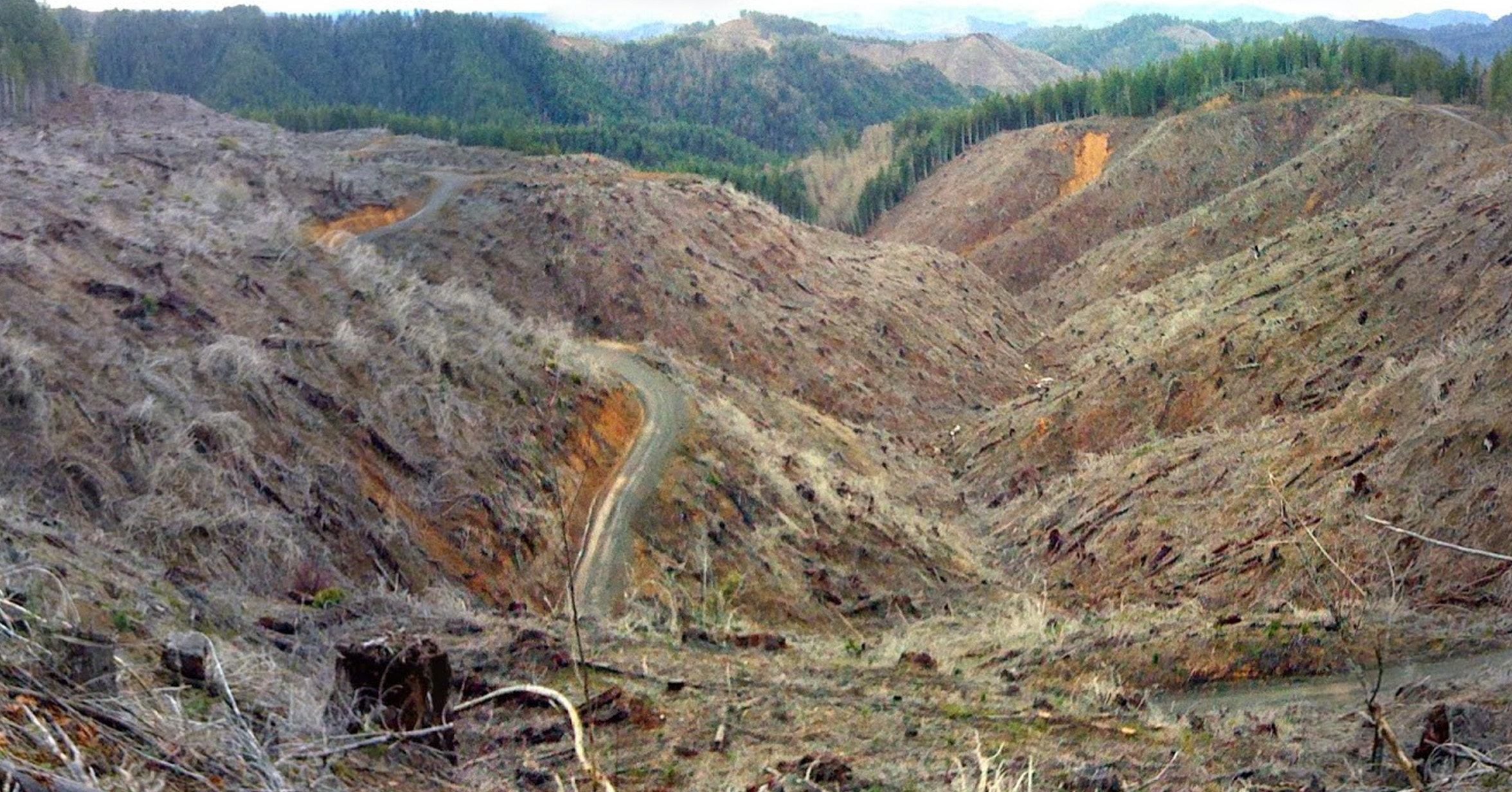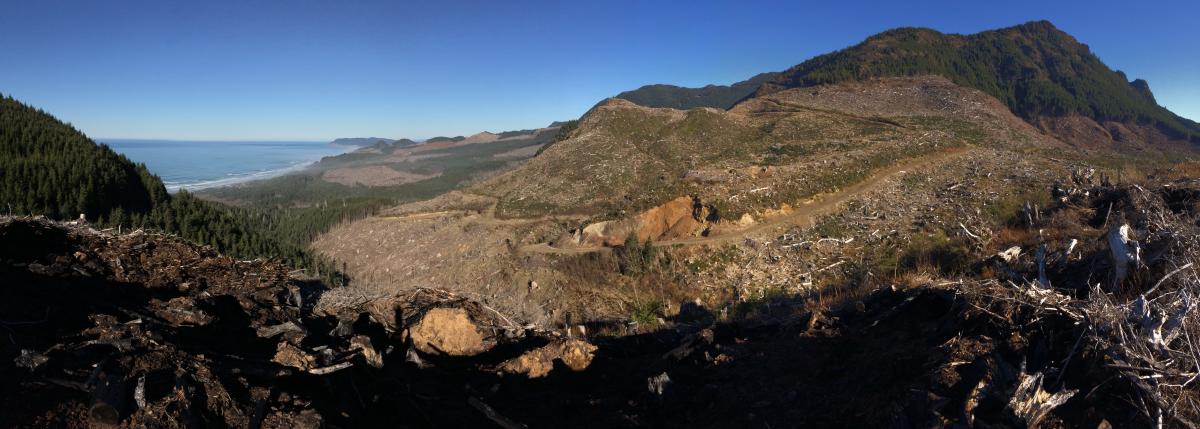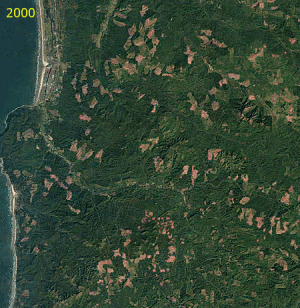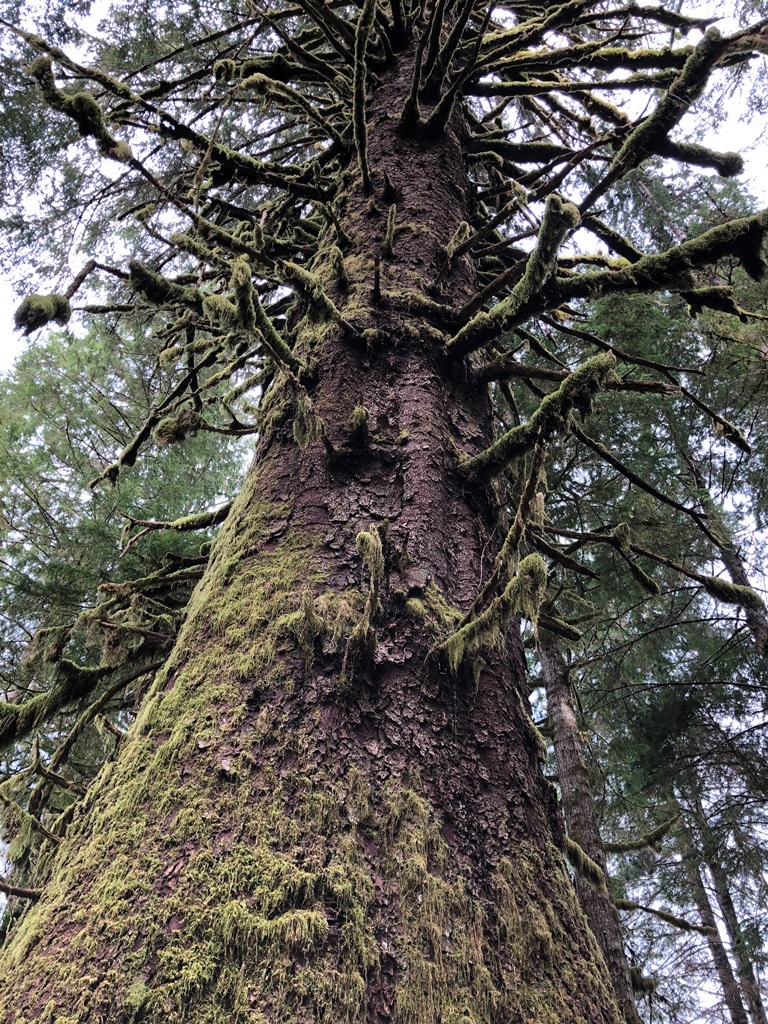
Oregon has learned the hard way the excesses of the logging industry. During the last century, national forests were being clearcut at a rate of 3 square miles a week. That legacy can still be seen in struggling salmon runs, imperiled wildlife, and the devastating loss of approximately 90% of Oregon’s ancient forests. Unfortunately, while the carnage has shifted from public lands to the vast sea of corporate-owned clearcuts and tree plantations that dominate Oregon’s Coast Range, forestry science is telling us that the negative consequences of Oregon’s clearcut logging legacy may be even greater than ever imagined.
Clearcut logging has long been tied to issues of water quality. The construction of logging roads and logging of steep slopes leads to muddy runoff that fouls rivers and fish-bearing streams. The aerial spraying of pesticides from helicopters has lead to several high profile controversies, including the poisoning of rural residents near Triangle Lake and Gold Beach, Oregon.

However, logging has also been tied to issues of water quantity. Analyzing records from the last 60 years, scientists have found that freshly clearcut and replanted landscapes increase water flows in streams for about the first 15 years, then the young tree farms become dramatically more thirsty, leading to declines in water availability. Heavily logged and roaded landscapes are therefore hit with two extremes - unnaturally high runoff during storms that can erode stream banks and scour fish eggs followed by unnaturally low summer stream flows that offer reduced stream habitat and are too warm for trout. This can have dire consequences not only for fish, but for downstream communities and rural residents that rely on dependable water sources.
For example, the community of Yachats in Oregon’s rainy coastal range had to implement water restrictions during the drought of 2015 because their watershed was severely clearcut. Rain would fall into the watershed and then immediately flow out into the ocean, not slowly seeping out into streams like it would in an unlogged forest. In 10 years, Yachats will encounter another water quantity issue, as the young plantation trees growing in their watershed will suddenly begin soaking up more water, and leaving less to reach streams and rivers.
  |
| Timelapse of clearcutting in the Oregon Coast Range |
Clearcut landscapes also have a big impact on how fires, once a natural part of the landscape, behave. Logging companies and their campaign contribution benefactors have long argued that more aggressive management of public forests (emulating industrial clearcutting) will diminish fire risk. Science indicates that the opposite is likely the case, and industrial management of public lands would in fact increase fire risk. This is due to the fact that tree farms represent a highly hazardous arrangement of fuel, with dense interlocking foliage close to the ground and exposed to surface fires, whereas mature forests have large trees with thick bark, and most of the foliage is held high, out of the reach of surface fires.
A recent analysis by forestry scientists found that dense, managed plantations in the area burned in the 2013 Douglas Complex fire in southwestern Oregon experienced a higher fire severity than mature and old-growth forests. While weather was found to be the biggest factor in the study, the age of the forest was a better predictor than even the amount of woody fuel. Mature and old-growth forests on public lands burned with lower severity, while young stands increased wildlife severity.
And last but not least: climate change. Again, the clearcutting industry and some politicians have advocated that increased logging, biomass energy, and wood products that trap carbon are a solution for mitigating climate change. And, once again, the science contradicts them. In fact, rather than being the solution to climate change, Oregon’s logging industry is the top carbon emitter for the state!
 |
| Old-growth in the Clatsop State Forest targeted to be clearcut later this year |
Analyzing carbon sequestration and Oregon’s current logging practices, scientists have discovered that the carbon produced by standard timber production through clearcut logging, soil disturbance, transportation, and wood processing does not nearly make up for the carbon trapped in wood products, which has been overestimated. Rather than increase aggressive forestry on public lands, the scientists say the best way to use Oregon’s forests to combat climate change is to protect more national forests and allow private forests to grow for much longer before being logged, as well as re-foresting some parts of the state.
We are often told that Oregon’s forest practices are the strongest in the world, and yet they are far weaker than our neighbors in Washington, California, and Idaho when it comes to protecting clean, plentiful water, affecting fire, and storing carbon. We are also told how often Oregon’s rules are updated, but some of those updates have actually weakened protections for drinking water and the most recent revision merely made it easier to kill bald eagles. In fact, from fire danger and water, to wildlife habitat and carbon storage, Oregon’s logging rules are not only failing us, they are making things worse.
We have grappled with the excesses of the logging industry before, and we can do so again. By following the science and modernizing Oregon’s forest rules, we can not only make our forests healthier, we can ensure clean water, abundant salmon, safer communities, and a natural legacy for the next generation.

